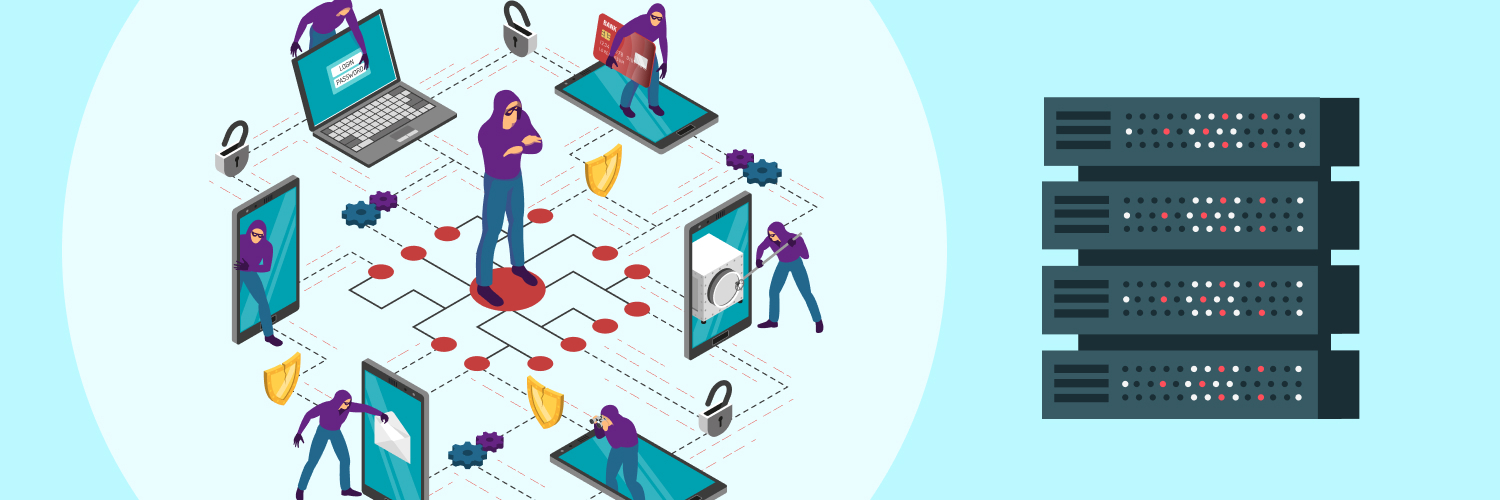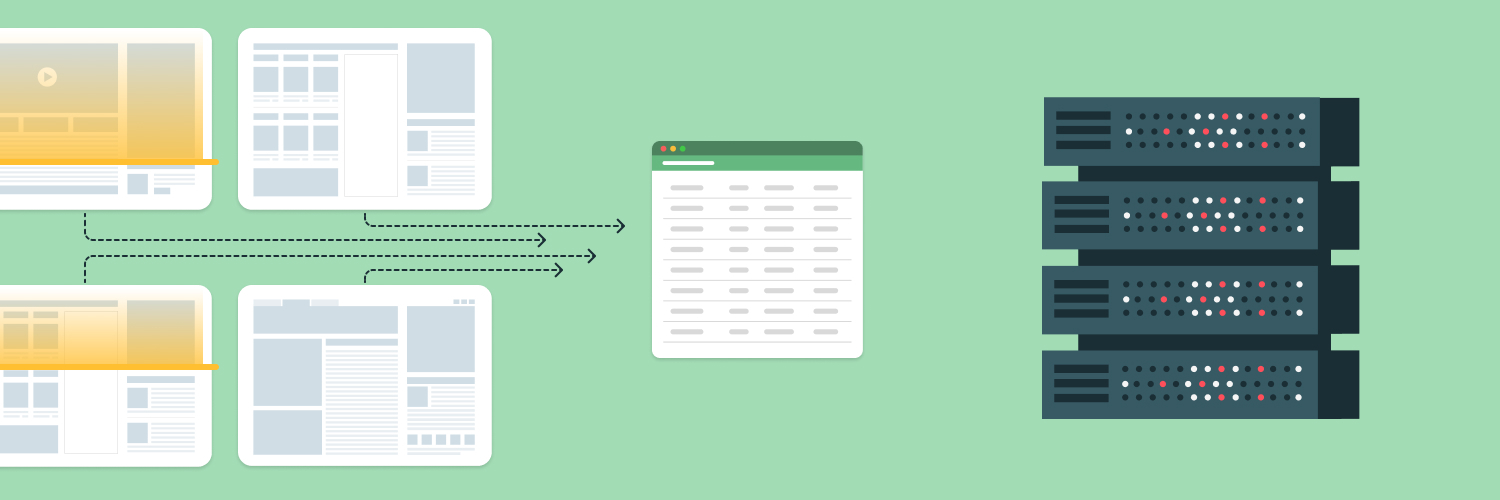Consumer Analytics: Get To Know Your Customers Better
Gone are the days when a customer would walk in, talk to a salesperson, and make a purchase. Today, customers move through different sales stages to buy from a company in a digital-driven world.
To thrive in the e-commerce market, knowing your consumers’ interests and behavior is essential. Understanding their needs and interests can help the company maximize customer retention and sales profit. This article is your comprehensive guide to understanding everything about consumer analysis. Read on to explore consumer analytics, how it’s done, and much more.
What Is Consumer Analytics?

Every business must admit that not all buyers are interested in its products or services. Investing time, effort, and money to reach an audience with no interest in what you offer is a complete waste. Successful businesses don’t work like this anymore. So how does successful business, or more precisely, successful marketing, work? First, they identify the interested consumers, divide them into categories based on various factors, and then target them with a customized marketing strategy based on their interests.
After all, 40% of salespeople believe getting a consumer to purchase is the most challenging part of the sales funnel. It is one of the most difficult tasks for businesses in this increasingly competitive world, so companies need to get creative with their marketing.
That’s where consumer analytics can come in handy. Also called customer analytics, it is a detailed and systematic evaluation of the company’s customers. The businesses analyze consumer information, including behavior, age, interest, location, gender, etc., to identify, interact with, and retain the most interactive customers. A recent study shows that customer retention increases sales profits by up to 25% compared to customer acquisition. That means you don’t only need new customers; you also need a customized marketing strategy to retain them.
Try Our Web Scraping API
The easiest way to get your project started!

Consumer data analytics is a holistic approach that enables companies to understand customer behavior. The data and insights obtained through customer analytics help businesses empower sales, product development, and marketing efforts. Consumer analytics means your business prepares segmented marketing strategies using proper analysis tools. With this, you collect real-time consumer data, enabling you to interact with customers in the best way possible.
However, before you begin to create and perform the consumer data analytics, don’t forget these vital factors:
- Know your customers
- Define your goal
- Collect relevant and real-time data
- Prioritize data privacy
Valuable Consumer Data Generated by Consumer Analytics

In most cases, companies use consumer analytics to collect the following data:
- Web behavioral data
- Transactional data
- Product/service data
- Data from customer-create texts
Web behavioral data
Web behavioral data gives your company a competitive advantage. It captures details like how the audience interacts with the brand’s products and services, including visitors and consumers. Web behavioral data evaluate consumers’ pages opened, visited, and surfed. For example, your business has data access to how often customers have scrolled down a page, the amount of time they spent on your website, purchased or returned, etc.
In essence, web behavioral data identifies the small phases of a customer journey to analyze the performance and profitability of your web pages and make improvements accordingly.
Transactional data
Consumer online retail analytics generates transactional data that includes a customer’s transactions, payments, purchases, etc. For example, the data typically contains the consumer’s ID, time spent, amount, balance, interest, product purchased, payment mode, and purchase data. It also includes the record of a customer’s previously-used vouchers and discounts associated with the transaction. Transactional data is generated in a sales funnel.
Product/service use data
Products and services interact with customers, which are critical aspects of every business. Product/service usage data is an evaluation process of consumer data analytics that comprehends a customer’s usage pattern. The usage pattern includes log data analysis, request forms, consumer leads, IoT data, customer support service, etc. This data helps businesses plan a strategized customer experience to improve the product/service portfolio.
Data of customer-created content
Customer-created content, also called text and consumer sentiment analysis, are other profitable data sets. This data aims to help businesses understand consumer sentiments. You can easily understand a customer’s attitude, interaction, and behavior toward your business through this process. The data includes online reviews, feedback, recommendation posts about your product or service, customer complaints, refunds, preferences, and interest.
Importance of Consumer Data Analytics for Businesses

If a company isn’t investing in consumer analytics, it’s probably missing out on growth opportunities. From a small retail shop to a big e-commerce firm, no business can thrive long-term without a consistent flow of happy customers.
Customers can access information about where to search for goods and services, what to purchase, and how much to pay in the digital era. They know how to find a perfect product or service to meet their expectations. Therefore, companies must do everything to offer their targeted audience the right products, services, and suitable marketing campaigns. For this, businesses need consumer data analytics.
The primary goal of consumer data analytics is to establish a single objective for the target audience to help them make better decisions. With the help of consumer data analytics, you can highlight profitable customers and recommend effective ways to retain them.
As consumer analytics becomes more established as a highly effective approach, most businesses are spending more on consumer data analytics. Research shows that global consumer data analytics spending was around $180 billion in 2019.
Marketers are desperate to utilize the data insights from online retail analytics to create more customized targeted offers. Personalized marketing also delivers more ROI than any other marketing method.
Companies that understand and prioritize their customer’s interests and buying preferences are most likely to execute customer-friendly marketing and sale strategies. In addition, consumer behavior data provides a huge chunk of valuable data to create business plans that are highly personalized to customers’ needs.
The key to growing a business lies in understanding the needs and interests of your audience. Consumer data analytics help you with this. From building brand recognition to customer retention, knowing how your customer behaves can help your business stand out in the crowd.
Here are some reasons why businesses need to integrate this technology into their business model:
Lowers acquisition cost
Customer acquisition cost is one of the biggest concerns for a company’s profit, especially for smaller firms and startups. The process is time-consuming and expensive, and small businesses are already low on resources. For sectors like technology, the cost is several hundred dollars.
Attracting new customers requires a collaborative approach to strategies, including targeted marketing. Without accurate consumer data, you will fail to plan well-defined strategies for your business.
As a result, you might be looking for your prospects in the wrong place. A well-defined consumer data analytics can help you personalize your strategies and efforts, so you can attract those interested in your brand and make them your loyal consumers.
Enhances customer retention
Keeping an old customer interested usually requires more effort and time, but it’s still more productive and cheaper than pursuing a new one. Research shows that attracting a new customer costs five times more than retaining an existing one.
There is fierce competition in the e-commerce industry. Every business seeks customer attention, so investing money and resources in customer satisfaction is an excellent way to boost your sales. Consumer data analysis provides valuable insights and behavioral data to help you curate highly customized strategies to retain customers.
Boosted sales profit
The revenue, profitability, and ROI of a business depend on the number of your customers. Without a good number of people to buy your products, you won’t make sales that can boost your profits. You can create and market your products better and more targeted by leveraging consumer data analytics. The higher the customer acquisition and retention rate, the higher the profits.
Well-defined campaigns
Every consumer data analysis begins with raw, scattered data and ends with informed and intelligent business decisions. The customer analytics tools are designed to improve and enhance the customer experience per their expectations. By conducting customer data analytics, you can empower your campaigns to be more tailored and focused on consumers’ interests.
What Are Big Data and Consumer Data Analytics?

Marketers and big data have one thing in common: an ability to learn everything they can about their target audience. As a result, big data can nearly answer any question about how to grow sales, better understand customer behavior, and improve brand image.
The term “big data” is frequently overused and misunderstood. Big data is utilized to understand consumer behavior. It’s an effective marketing tactic to evaluate the data points during the customer’s journey, from beginning to end. Big data prepares marketers with the solid marketing knowledge and tools required to make better-informed decisions.
The process examines large data sets to identify market trends and research patterns based on the business needs.
Analytics are divided into three categories:
- Predictive
- Descriptive
- Prescriptive
Using big data and analytics enables businesses to fuel sales, so most organizations today employ them for growth. As a result, incorporating big data into marketing strategy is a no-brainer.
But how can you make the most of it? And how can a business turn enormous data into profit as quickly as possible? There are various options for doing so.
How Big Data and Analytics Are Used To Understand Consumer Behavior and Motivations

Predictive behavior modeling provides marketers with valuable information to help them enhance their marketing efforts.
It’s a well-defined regression model which goes beyond analyzing the past data to curate key points and predictions about what will happen through mathematics and statistical understanding.
When you back up the statistical data with factual analysis, you will most likely get desired outcomes—increasing the chance of generating a more successful marketing plan.
Take a look at how big data and analytics help businesses understand consumer behavior and motivations:
Identifying the most effective content
Marketers before big data had a significant challenge and no means of knowing whether the content they created was successful. Imagine how difficult it was for them and how much more effort they had to put into meeting their goals.
Big data removed the need for extra analysis and answered questions like whether the content is compelling, helping the business, etc.
Marketers can analyze the performance of their campaigns with great precision by utilizing big data. As a result, the effectiveness of marketing initiatives can significantly improve. It also allows marketers to go through a complete description of suitable content kinds and consumer interests.
Allocation of resources
Implementing allocated resources correctly to meet your organization’s objectives and goals is essential. Predictive analytics can predict and segment where you need to deploy the resources.
However, it might be challenging for an individual to maintain big data sets against the organization’s goal during this process. Businesses use ERP systems to cater to this. The ERP system aims to manage the daily activities of a company, such as; accounting, project and risk management, procurement, etc.
You can quickly examine data sets by combining metrics from the ERP system (Enterprise Resource Planning) into your current planning. For example, the ERP system makes it easier to analyze how far you’ve achieved your goals and objectives over time.
Forecasting
Based on the current and past sales performance statistics, forecasting ROI and sales are undoubtedly one of the best methods of using data in consumer behavior analytics. Furthermore, these forecasts are critical for creating cost-effective budgets and marketing strategies.
Predictive analytics can be an efficient tool for marketing to increase the company’s ROI. In addition, it can aid in minimizing and eliminating human error to generate strategized sales forecasting.
Customized marketing
Every marketing strategy should deliver a message to the right audience at the right time. With the growing competition among e-commerce businesses, companies need to reach out to their customers to stay one step ahead of their competitors.
Marketing experts can target segmented groups with different marketing tactics by dividing their campaigns based on customers’ interests, behaviors, and locations. To develop a personalized marketing campaign, you can create a customized suggestion based on a customer’s purchase history, sales life cycle, browsing behavior, and other vital aspects.
Pricing on demand
Pricing demand refers to the budget a customer agrees to spend on a specific product or service. Companies can leverage this demand information to demonstrate at what price or budget a new product should be launched. This tactic is helpful in product development.
Predictive analysis is also used to create targeted demand pricing. With insights and data, marketers can understand the effect of price changes based on demand through trend purchase analysis in every data set.
Improved customer satisfaction
You’re doing it incorrectly if you’re just selling to a customer instead of catering to their needs. It’s 2022, and your company should focus on serving customers rather than taking money from their wallets.
Undoubtedly, customer happiness significantly impacts their loyalty and retention, ultimately resulting in the success of your marketing and sales goals. A satisfied consumer equals a successful business transaction.
Predictive analytics may help organizations determine which product/service additions result in the most significant increase in customer satisfaction. Several tools, like conjoint analysis, can help companies determine which product/service enhancements result in the most significant increase in customer happiness.
Market subdivision
Segmentation divides a target market into subgroups based on comparable characteristics, such as demographics, geography, habits, or attitudes. It allows business owners to target each segment better and cater to their specific demands. Data helps develop target segments and determine the most effective positioning for each.
You can also use predictive analytics to find the most ‘profitable’ market segments and target them based on previous consumer behavior. Marketing managers use this information to allocate resources where they are genuinely required, i.e., to reach the most profitable demographics.
Lead scoring methods
Big data can foresee the future, so lead generation methods are evolving fast. Modern predictive analytics provides data marketers examine to identify the most effective lead scoring actions.
Lead nurturing methods that give businesses a competitive advantage are often derived from results obtained from consumer analytics. For example, according to recent research, companies implementing efficient lead enabling tactics created 50% more sales-ready leaders. In addition, the process was 33% less expensive!
How does big data help businesses’ marketing strategies?
Predictive analytics is a difficult-to-learn yet effective method that can accurately forecast consumer behavior and help businesses maximize ROI when combined with the correct marketing strategies. However, big data isn’t a quick solution to eliminate terrible marketing decisions and boost income in the blink of an eye.
However, it’s excellent for reducing the risk of human mistakes in decision-making, validating proposals, and predicting trends. Another thing to know is that you need a data analyst to understand those massive amounts of data and connect the dots between numbers, customer experience, and marketing campaigns.
Examine the impact of customer behavior on your key performance indicators (KPIs). The quantitative indicators, like revenue, cost per click, churn rate, CSAT, and NPS, are driven by real-time customer behaviors. Big data and analytics tools allow you to connect customer experiences and company goals in seconds, not days or weeks. You’ll be able to design highly-targeted marketing campaigns that will raise your profitability and minimize inefficiencies once you’ve learned how to harness the power of big data.
However, collecting third-party data poses some risk factors. First, you have to make sure the data you wish to extract is valid and doesn’t have any bugs. Incorrect, unauthorized, or invalid data leads to inappropriate results and can hinder the success of your marketing strategies.
Web scraping effectively extracts data from different sources, including e-commerce websites, social media platforms, PDFs, videos, audio, etc. It’s an efficient way to get valuable data without paying a penny.
Different Methods To Collect Consumer Data Leads

So far, we have established that consumer analytics is an effective tool and provides businesses with valuable data. However, the effectiveness depends on how accurate the data is and the quality of the methods used to obtain it.
Here are some popular and effective sources to collect data. You can use one or a combo of sources to maximize the outcome:
- Surveys
- Marketing Analysis
- Monitoring Social Media
- Registration Data
Survey
Asking for consumer feedback and questions is the most popular and effective method of extracting real-time data. One of the most common methods to collect feedback is conducting surveys.
Web-based surveys are an easy way to gather customer data. You can create a feedback questionnaire with a limited choice of answers. Ensure that the survey provides solid knowledge about your customer’s interests and needs.
Marketing analysis
Marketing analysis is one of the most popular methods among marketers due to its effectiveness when gathering customer data. Through different marketing campaigns, you can collect valuable insights based on behavior, interaction, etc.
Since marketing campaigns are conducted on a particular channel, you can quickly examine and collect the user data to better understand how they interact, how often, where, and at what time.
Monitoring social media
All thanks to social media, marketers have the power to extract real-time data as each customer interacts with your campaigns. Gathering data about customers’ interests, behavior, gender, location, and impression can help you better understand your audience to create effective strategies.
For instance, you can monitor and examine how many times your brand was mentioned, how many times it was visited, and much more through social media. One of the types of social media monitoring is called social listening.
Registration data
Another excellent method to extract accurate consumer data is to create a sign-up registration for your consumers. When a customer signs up for your email list or a subscription plan, they provide you with a rich, personal, and valuable data set. You can use this data to create highly personalized strategies and campaigns to boost your sales profit.
However, add a permission action to access the customer’s information. Also, keep in mind not to ask too many questions, as they can drive the consumers away from signing up for your subscription. Keep a balance between questions and feedback to ensure you get enough data at the end of the day.
Web Scraping: A Technique To Extract Meaningful Consumer Data Leads

Consumer data analytics is a systematic process of evaluating raw data sets to extract valuable insights. These meaningful insights decide the best alternatives available for action. For example, which team structure is more effective? Or when is the efficient time to release a marketing campaign?
The key aspect of building a successful business is to create a loyal customer base by meeting and prioritizing customer needs. Consumer data analytics and consumer data lead (age, sales, location, reviews, etc.) are the most effective methods to build customer relations.
To develop strategies and campaigns that perfectly fulfill consumer needs, you can perform web scraping on your competitors’ websites to extract valuable information. Here is a comprehensive guide to help you understand how to use web scraping to find meaningful data insights with consumer data analytics.
Web scraping
Web scraping, also called web data extraction, is a data analytics technique to collect the web’s structured data in an automated set. You can use web scraping if you plan to make informed decisions based on considerable amounts of web data.
Try Our Web Scraping API
The easiest way to get your project started!

Web scraping includes using automated bots to skim different websites to extract data. Web bots are responsible for collecting data by devising the targeted webpage to a basic form: HTML text.
The process might sound a bit complex. However, it’s one of the most straightforward and effective processes that work with minimal components; a web scraper and proxies.
Web crawler
Commonly called a “web spider,” a web crawler is an artificial intelligence-based bot that scans the site to search and index the content. A website is first crawled to discover and download the URLs, which are then passed on to the web scraper.
Web scraper
It is a specialized tool to draw out complex data into a more straightforward form from a webpage. There are different types of web scrapers in terms of design, complexity, and speed. However, one common thing in every web scraper is the presence of data locators (selectors). The purpose of data locators in a web scraper is to track the data that needs to be extracted from the HTML file. The data locators usually range in CSS, XPath, regex, etc.
What is a web scraping tool?
A web scraping tool is an automated software program responsible for extracting or scraping meaningful data from a website. A scraping tool collects the data from web pages to perform web scraping.
A scraping tool makes HTTP URL requests to target a site and draw out the data from a webpage. Usually, the parsed content is publicly available to users and provided by the servers, such as HTML.
In rare cases, the scraping tools request the internal API (application programming interface) for correlated data like contact details, visual content, or product prices. These associated data are stored in a database rendered to a browser through HTTP permission.
How to perform web scraping
If you’ve planned on doing the web scraping by yourself, here is an easy guide to help you get started:
- First, choose your target websites.
- Now, collect the URLs of the webpages whose data you wish to extract.
- Next, apply accessibility requests to these URLs to access the HTML of web pages.
- Use the web locators to extract the data in the HTML.
- Lastly, store the data in any structured format such as CSV or JSON file.
Sounds easy, right? Well, yes.
However, there might be some complicated issues to tackle if you scrape a colossal chunk of data. This may include managing the web scraper if the site layout changes, performing JavaScript, maintaining proxies, or handling the Autobots.
These are complex technical issues that can consume your time and resources. However, some open-source web data scraping tools can help you conduct the process, but they have limited functionality.
Common use cases of web scraping
If you’ve just learned about consumer analytics and become familiar with web data scraping, there are multiple ways to use it for your business.
Whether planning cost-effective strategies or addressing potential roadblocks, web scraping empowers businesses to extract and transform complex web data into a simple and structured form. Some common use cases where a company uses web scraping to boost its growth are:
- Market research
- Price intelligence
- Lead generation
- News monitoring
- Demand analysis
- Competitive analysis
Market research
Market research is the most significant source of information and an excellent beginning point for anyone thinking of launching or developing a product. The more information you have, the better.
You can do market trend analysis, market pricing, optimize point of entry, or use the data for research and development using an API scraper on relevant websites. Web scraping allows enterprises to gain access to high-quality, high-volume, and highly informative web data that can help them make better decisions in the future.
Price intelligence
Another common reason entrepreneurs or firms use online scraping technologies is to collect data about competitors’ prices and items, such as available stock or product descriptions. This can also sometimes be called price intelligence, price monitoring/tracking, or price aggregation. Automating pricing strategies and market positioning can ensure corporate development and continuity.
Lead generation
Customers can be found by stocking shop shelves, selling online, using social media, and placing ads for a company that sells common commodities. Of course, there are other options, but these are the most common.
However, the tactics outlined above may not work for a niche product or service. If you’re selling something only applicable at a given time or to a specific type of customer, you need to get more innovative to find new leads. For example, your product isn’t sold in niche stores or receives little attention in department stores. Or, your company’s website and e-commerce sites do not receive traffic because the product has a low internet search volume.
It’s also possible that your target audience may be widely dispersed or have little interest in the product outside of its intended uses. Maybe the audience is small, so ads (online or otherwise) provide little return on investment.
Data analysis
You might want to gather and evaluate data from various websites about a given category. For example, real estate, autos, technological devices, industrial equipment, business contacts, and marketing are possible categories.
Different data sets are present on a website, such as text strings, SGML basic type, languages codes, etc. Therefore, extracting these different data types also requires a different approach. Under multiple parts, the data may be spread across numerous pages (similar to Google search results, which is known as pagination or paginated lists). So even with a single webpage, it’s likely that you won’t be able to see all of the information at once.
Competitor analysis
There are several competitors for every new firm that isn’t reinventing the wheel. They offer different services at different costs and with different approaches. Keeping an eye on them all seems exhausting to any human, primarily if you work in a fast-paced business like e-commerce.
To keep ahead of the competition, you need to analyze every other competitor, either new or old. You can do so by using a scraping API on your competitors’ websites, starting from their features, prices, and landing sites to their social media accounts. You get the most significant benefit when you gather data from your competitors. You’ll have a better understanding of the market then, and you’ll be able to calculate averages and spot undiscovered chances.
If you’re planning to extract data through web-scraping, consider Rayobyte’s Web Scraping API your first choice. This platform performs all the web scraping tasks for you, so you can spend more time analyzing the collected data. The expert team at Rayobyte’s Web Scraping API can take away all the hassle of web scraping! No more blocks, captchas, proxy management, or browser scaling. They have simple pricing, no monthly commitment, and your credits never expire.
Proxies for Safe and Enhanced Web Scraping for Consumer Behavior Data

Web scraping can be done with software-based scrapers. If you have an on-site IT team with expertise in consumer data analytics, they can also utilize proxies to scrape the website. However, the manual process can be pretty time-consuming. This is when a web Rayobyte’s Web Scraping API comes into play. But, first, you need an effective proxy to mask your identity from competitors.
Proxies are a vital tool for conducting web scraping. They enable the user to apply for multiple requests through a single IP address, making it necessary to bypass the anti-bot security measure placed on websites. Many websites have this layer of security to prevent any suspicious activity. One of the great benefits of proxies is that you can access any website without getting restricted or blocked. There are different proxies, each with its advantages and setbacks. The most common proxies types are data center, ISP, and residential.
Data center proxies
Data center proxies are famous for their faster speeds; they offer quick and easy web access and a fast user experience. They are cheaper than other types of proxies and can be a great web scraping tool if you’re more of an expert proxy-wise. They allow users to access and scrape the website safely and anonymously from many geographical locations. For instance, if a user wants to access a site from a different country without risking their IP address, the data center proxies can pass the website’s geo-location limitations. Rayobyte provides reliable data center proxies, allowing users to extract data from anywhere.
ISP proxies
ISP proxies are the combination of both data center and residential proxies qualities, the best of both proxy worlds. They are quick and have the authority to stay undetected by sites.
Rayobyte’s ISP proxies are intermediary IP addresses issued by actual Internet Service Providers but housed in data centers. These proxies deliver around 1 Gbps speed 24/7, along with dedicated and interactive customer support to assist you throughout your data extraction process. In addition, Rayobyte puts no limits on bandwidth or threads, meaning more significant savings for you!
Residential proxies
Residential proxies are more challenging to detect by websites, as they use IP addresses assigned to real residential locations that are not yours. Making your traffic appear more human-like to websites.
Rayobyte is known for providing top-tier residential proxies that are ethically sourced. You can utilize these proxies for web scraping and other purposes. In addition, these proxies contain minimal downtime, meaning you can anticipate a great outcome. They have high authority, are always ethically sourced, and have advanced features like geo-targeting and sticky sessions.
Final Words

Data is an essential element for long-term success in almost every industry these days. The internet is filled with valuable data that a company can extract and analyze for various marketing purposes, like consumer analytics. Consumer analytics, which we talked about in-depth above, refers to customer sales history, demographics, gender, interest, and sentiment and helps companies understand consumers’ needs and demands.
You can extract consumer information from different websites through automated web scraping. The process delivers meaningful insights and data, allowing a company to achieve the desired outcome with less effort and time. With secure proxies that safeguard your IP address and a team dedicated to your success, you can collect customer insights and data and formulate your marketing and sales strategies accordingly. In addition, the Rayobyte team can review options with you and help you find what type or combination of proxies will work best for your project or use case. Get in contact today!
Try Our Web Scraping API
The easiest way to get your project started!

The information contained within this article, including information posted by official staff, guest-submitted material, message board postings, or other third-party material is presented solely for the purposes of education and furtherance of the knowledge of the reader. All trademarks used in this publication are hereby acknowledged as the property of their respective owners.




